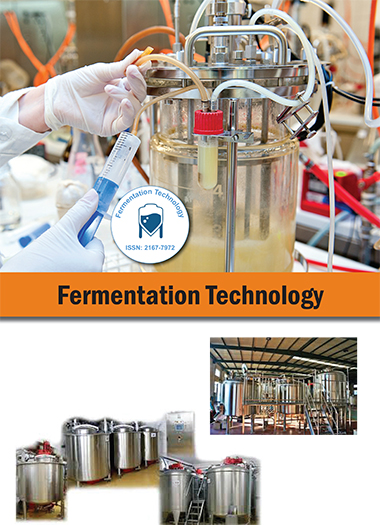Indexado em
- Abra o Portão J
- Genamics JournalSeek
- Acesso à pesquisa on-line global em agricultura (AGORA)
- RefSeek
- Universidade de Hamdard
- EBSCO AZ
- OCLC- WorldCat
- publons
Compartilhe esta página
Folheto de jornal

Periódicos de Acesso Aberto
- Agro e Aquicultura
- Alimentos e Nutrição
- Bioinformática e Biologia de Sistemas
- Bioquímica
- Ciência de materiais
- Ciencias ambientais
- Ciências Clínicas
- Ciências Farmacêuticas
- Ciências gerais
- Ciências Médicas
- Cuidados de enfermagem e saúde
- Engenharia
- Genética e Biologia Molecular
- Gestão de negócios
- Imunologia e Microbiologia
- Neurociência e Psicologia
- Química
Abstrato
Scaling Up for the Industrial Production of Rifamycin B Fed-Batch Production Mode in Shake Flasks and Bench-Scale Fermentor
Hewaida F El-Sedawy, Manal MM Hussein, Tamer Essam1, Ossama M El-Tayeb and Fatma HA Mohammad
The production of rifamycin B using the gene amplified variant of Amycolatopsis mediterranei (NCH) was initially optimized in shake flasks through medium modifications and fed-batch addition of uracil. The yield was increased by 21.7% (from 11.7 to 14.3 g/l) when F2m1 medium was used. The production was further verified and optimized in fedbatch- mode in a laboratory fermentor using F2m3 medium and the optimized conditions (agitation 500 rpm, aeration; 1.5 for 3 days then control DO at 30% thereafter, pH; 6.5 for 3 days then 7 thereafter and control temperature at 28°C). Fed-batching of glucose syrup (5% v/v at day 3) and glucose (1% at days 6 and 8) increased the yield from 17.8 to 20.9 g/l (17.3%) at day 10. A yield of upto 20 g/l was recorded when 0.1% uracil was fed-batched at day 2. Integration of the most optimum conditions for fed-batching glucose syrup, glucose and uracil further increased the yield from 17.8 to 24.8 g/l (39%) in 10 days. The overall optimization of rifamycin B production increased the yield almost 2 folds. Statistical analysis revealed that there is a significant increase in rifamycin B production by using One-Way ANOVA at p